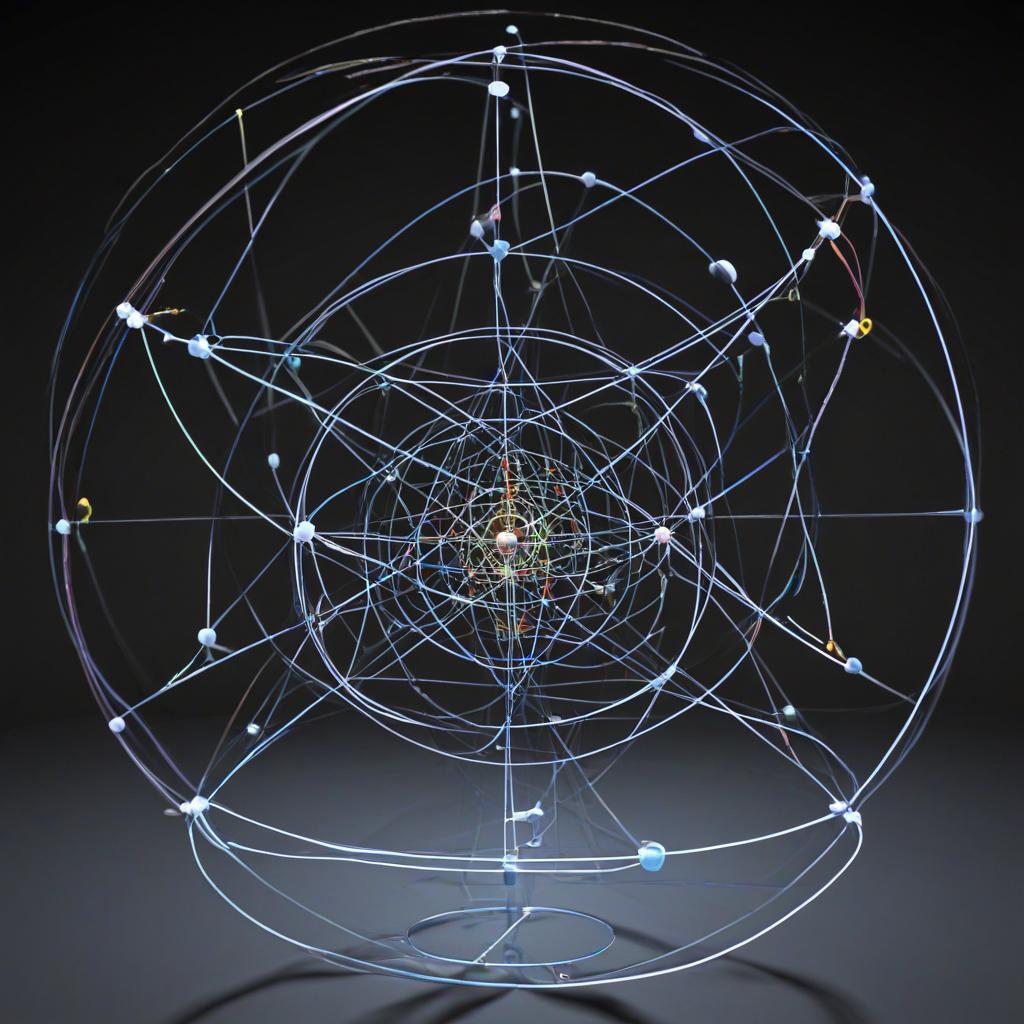The Role of Mathematics in Proving Scientific Theories and Hypotheses
In the realm of science, theories and hypotheses are the building blocks of our understanding of the natural world. These constructs offer explanations for observed phenomena and predict future events. However, for these theories and hypotheses to be accepted, they must be tested and proven. A common notion is that “every scientific theory or hypothesis should be proved by mathematics.” This statement underscores the critical role mathematics plays in validating scientific ideas. In this blog post, we will explore why mathematics is essential in proving scientific theories and hypotheses, how it has been used historically, and the limitations and nuances of this approach.
The Foundation of Scientific Inquiry
Scientific inquiry is a systematic process that seeks to explain natural phenomena. It begins with observations, leading to the formulation of hypotheses—tentative explanations that can be tested. When a hypothesis is rigorously tested and consistently validated, it may evolve into a scientific theory, a well-substantiated explanation of some aspect of the natural world.
Mathematics serves as the language of science. It allows scientists to express ideas precisely, create models, and make predictions. The relationship between mathematics and science is so intertwined that many consider mathematics the backbone of scientific validation.
Why Mathematics is Crucial
- Precision and Clarity: Mathematics provides a precise and unambiguous language to describe natural phenomena. Equations and mathematical models allow scientists to quantify relationships and predict outcomes with accuracy. For example, Newton’s laws of motion are expressed mathematically, enabling precise calculations of the movement of objects.
- Predictive Power: A key feature of a scientific theory is its ability to make predictions. Mathematical models derived from theories can be used to predict the behavior of systems under various conditions. For instance, Einstein’s theory of general relativity, expressed mathematically, predicted the bending of light by gravity, a phenomenon later confirmed by observation.
- Testability: Scientific hypotheses must be testable and falsifiable. Mathematics allows for the derivation of specific, testable predictions. These predictions can then be compared with experimental or observational data to determine the validity of the hypothesis. For example, the Higgs boson was predicted mathematically before it was experimentally discovered at the Large Hadron Collider.
- Universality: Mathematical principles are universal. They apply consistently across different contexts and disciplines. This universality allows scientists to apply mathematical models to a wide range of phenomena, from the microscopic world of quantum mechanics to the vastness of the cosmos.
Historical Examples
Throughout history, mathematics has been instrumental in the development and validation of scientific theories:
- Kepler’s Laws of Planetary Motion: Johannes Kepler used mathematics to describe the orbits of planets around the sun, leading to the formulation of his three laws of planetary motion. These laws were later used by Isaac Newton to develop his theory of gravitation.
- Maxwell’s Equations: James Clerk Maxwell unified electricity and magnetism through a set of mathematical equations, leading to the theory of electromagnetism. These equations not only described existing phenomena but also predicted the existence of electromagnetic waves, which were later confirmed by Heinrich Hertz.
- Quantum Mechanics: The development of quantum mechanics in the early 20th century relied heavily on mathematics. The Schrödinger equation, Heisenberg’s matrix mechanics, and Dirac’s relativistic quantum theory are all mathematical formulations that describe the behavior of particles at the quantum level.
The Limitations and Nuances
While mathematics is a powerful tool, it is important to recognize its limitations and the nuances involved in proving scientific theories:
- Mathematics Alone is Not Enough: A mathematical model must correspond to reality. A theory might be mathematically elegant, but if it does not align with empirical evidence, it cannot be considered a valid scientific theory. For example, string theory is a mathematically sophisticated framework that attempts to unify the fundamental forces of nature, but it remains unproven due to a lack of empirical evidence.
- Approximation and Simplification: Many mathematical models are approximations of reality. For instance, the ideal gas law is a mathematical equation that describes the behavior of gases under certain conditions, but it does not account for the complexities of real gases. Scientists must carefully consider the assumptions and limitations of their models.
- Complexity of Nature: Some phenomena are so complex that they defy simple mathematical description. In such cases, scientists may rely on simulations, computational models, or empirical methods to understand the system. For example, predicting the behavior of turbulent fluids or modeling climate change involves complex, non-linear mathematics and extensive computational resources.
- Philosophical Considerations: The relationship between mathematics and the physical world raises philosophical questions. Is mathematics a human invention, or does it have an objective existence independent of our minds? How does mathematical abstraction relate to the concrete reality of the natural world? These questions remain the subject of ongoing debate among philosophers and scientists.
The Intricate Role of Mathematics in Proving Scientific Theories: A Deep Dive
Mathematics is often considered the backbone of scientific inquiry, providing a structured framework for formulating and testing theories and hypotheses. However, the journey from observation to mathematical proof is complex, involving multiple stages of insight, experimentation, and refinement. In this expanded exploration, we will delve deeper into the role of mathematics in science, examining how it serves as both a tool and a lens through which the natural world is understood.
The Scientific Journey: From Observation to Mathematical Proof
- Observation and Hypothesis FormationEvery scientific journey begins with observation. A scientist might notice a recurring pattern, an anomaly, or an unexplained phenomenon in nature. For example, Isaac Newton famously observed an apple falling from a tree, prompting him to ponder the force that pulls objects toward the Earth.
- Observation: This is the initial stage where a scientist gathers data, either through direct observation or experimentation. Observations might be qualitative (e.g., the sky is blue) or quantitative (e.g., the boiling point of water is 100°C at sea level).
- Hypothesis Formation: Based on these observations, the scientist formulates a hypothesis—a tentative explanation or prediction that can be tested. For instance, Newton hypothesized that the same force causing the apple to fall also governs the motion of celestial bodies.
- The Role of Insight and Intuition Scientific insight often stems from a deep understanding of the subject matter, combined with creativity and intuition. These insights are sometimes sparked by a sudden realization or a new way of looking at existing data.
- Insight: This refers to the moment of clarity or understanding that leads to the formulation of a new idea or the rethinking of an existing one. Albert Einstein’s insight that led to the theory of relativity was his realization that the laws of physics are the same for all non-accelerating observers, and that the speed of light is constant regardless of the observer’s motion.
- Intuition: Intuition in science involves making educated guesses or leaps of logic that aren’t immediately obvious. It often guides scientists in formulating hypotheses or in deciding which mathematical models to explore. For instance, James Clerk Maxwell intuitively believed in the unification of electricity and magnetism, leading to his formulation of Maxwell’s equations.
- Mathematical ModelingOnce a hypothesis is formed, the next step is to express it mathematically. Mathematical modeling involves translating the physical phenomena into a mathematical language, such as equations, functions, or statistical models.
- Formulation of Mathematical Models: A mathematical model is a representation of a system using mathematical concepts and language. It simplifies the real-world system to allow for analysis and prediction. For example, Newton’s second law of motion, F=maF = maF=ma, is a mathematical model that describes how the force applied to an object relates to its mass and acceleration.
- Development of Equations: Scientists often derive equations that describe the relationships between different variables in a system. These equations can be simple, like the law of gravitation, or highly complex, like the equations governing fluid dynamics.
- Use of Mathematical Tools: Scientists employ various mathematical tools to analyze their models. These tools might include calculus, differential equations, linear algebra, and statistics, depending on the nature of the problem. For instance, quantum mechanics relies heavily on linear algebra and differential equations to describe the behavior of particles at the quantum level.
- Testing and Refinement A key aspect of scientific inquiry is testing the mathematical model against empirical data. This stage often involves experimentation and data collection, followed by comparison with the model’s predictions.
- Experimentation: Experiments are designed to test the predictions made by the mathematical model. For example, Galileo’s experiments on the motion of objects down inclined planes provided data that supported the mathematical formulation of uniform acceleration.
- Data Analysis: Collected data is analyzed to see if it aligns with the predictions made by the mathematical model. Statistical methods are often used to determine the significance of the results and to account for any uncertainties.
- Refinement of Models: If the data does not fit the model, scientists must refine their models or consider alternative hypotheses. This iterative process is fundamental to scientific progress. For example, the Bohr model of the atom was refined into quantum mechanics when it failed to explain more complex atomic behaviors.
- Validation and Peer ReviewA scientific theory is not considered validated until it has been subjected to rigorous peer review and confirmed by independent experiments.
- Peer Review: Once a scientist has developed a mathematical model and tested it against empirical data, their findings are submitted for peer review. Other experts in the field evaluate the work to ensure its validity, accuracy, and originality.
- Replication: Independent scientists must be able to replicate the results using the same methods and data. Replication is a crucial step in establishing the reliability of a scientific theory.
- Examples of Theories Proven by Mathematics
- Newton’s Law of Universal Gravitation: Newton’s observation of falling objects led him to hypothesize that a universal force—gravity—acts between all masses. He mathematically modeled this with the inverse-square law, F=Gm1m2r2F = G \frac{m_1 m_2}{r^2}F=Gr2m1m2, which was later confirmed by astronomical observations, such as the motion of planets.
- Einstein’s Theory of General Relativity: Einstein’s insight that gravity is the curvature of spacetime led to the development of the field equations of general relativity, Rμν−12Rgμν=8πGc4TμνR_{\mu\nu} – \frac{1}{2}Rg_{\mu\nu} = \frac{8\pi G}{c^4} T_{\mu\nu}Rμν−21Rgμν=c48πGTμν. These equations, though complex, were validated through observations such as the bending of light by gravity during a solar eclipse and the precise prediction of Mercury’s orbit.
- Maxwell’s Equations: Maxwell’s unification of electricity and magnetism into a single theory was expressed through four differential equations. These equations predicted the existence of electromagnetic waves, which were later experimentally confirmed by Heinrich Hertz, laying the foundation for modern electromagnetism.
- The Schrödinger Equation: In quantum mechanics, the Schrödinger equation, H^ψ=iℏ∂∂tψ\hat{H}\psi = i\hbar\frac{\partial}{\partial t}\psiH^ψ=iℏ∂t∂ψ, provides a mathematical description of the quantum state of a system. The equation’s predictions have been repeatedly confirmed by experiments, such as the double-slit experiment, which demonstrates the wave-particle duality of matter.
- The Standard Model of Particle Physics: The Standard Model is a mathematical framework that describes the electromagnetic, weak, and strong nuclear interactions. Its predictions, such as the existence of the Higgs boson, were mathematically derived and later confirmed through experiments at the Large Hadron Collider.
- Philosophical and Epistemological PerspectivesThe relationship between mathematics and scientific theories also raises important philosophical questions about the nature of reality and our understanding of it.
- Is Mathematics Discovered or Invented?: One of the enduring debates in philosophy is whether mathematics is a human invention or a discovery of universal truths. If mathematics is a discovery, it suggests that the universe is inherently mathematical, and our task as scientists is to uncover these mathematical truths.
- The Limits of Mathematical Descriptions: Some scientists and philosophers argue that not all aspects of reality can be captured mathematically. Chaos theory, for example, shows that some systems are so sensitive to initial conditions that their behavior appears random, even though they are governed by deterministic equations.
- Mathematical Beauty and Elegance: Many scientists are guided by the belief that the correct mathematical description of nature should be elegant and beautiful. This belief, while subjective, has often led to significant breakthroughs. Einstein’s equation E=mc2E = mc^2E=mc2, for instance, is celebrated for its simplicity and profound implications.
- Challenges and Future DirectionsAs science progresses, new challenges emerge in the mathematical description of nature. For example, unifying general relativity and quantum mechanics into a single theory remains one of the greatest challenges in theoretical physics.
- Quantum Gravity: The quest to develop a theory of quantum gravity—one that unifies general relativity with quantum mechanics—requires new mathematical frameworks. String theory and loop quantum gravity are two competing models, but neither has been definitively proven.
- Complex Systems and Emergence: In fields like biology, economics, and ecology, scientists study complex systems where emergent behavior arises from the interaction of simpler components. Developing mathematical models that accurately describe these systems is an ongoing challenge.
- Machine Learning and Artificial Intelligence: The rise of machine learning and AI has introduced new mathematical tools and models for understanding data-driven phenomena. While these models are powerful, they often operate as “black boxes,” making it difficult to understand the underlying mechanisms.
Conclusion: The Unbreakable Bond Between Mathematics and Science
The journey from observation to scientific theory is a complex and nuanced process, deeply intertwined with mathematics. From the initial insight to the development of mathematical models, from rigorous testing to validation through peer review, mathematics serves as the critical tool that allows scientists to explore, understand, and prove the mysteries of the natural world.
While mathematics is not infallible and there are limits to what it can describe, its role in science is indispensable. Theories that withstand the test of mathematical proof and empirical validation become cornerstones of our understanding, guiding future research and expanding the boundaries of human knowledge.
As we continue to probe the depths of the universe—from the quantum realm to the cosmos—mathematics will remain our most reliable guide, illuminating the path to new discoveries and deeper insights into the fundamental workings of reality.
Conclusion
The assertion that “every scientific theory or hypothesis should be proved by mathematics” reflects the profound role mathematics plays in the scientific process. Mathematics provides the precision, clarity, and predictive power necessary for formulating and testing scientific theories. However, while mathematics is indispensable, it is not infallible. The ultimate test of a scientific theory is its correspondence with empirical reality, and mathematics is one of the tools—albeit a powerful one—that scientists use to explore and understand the natural world.
As we continue to push the boundaries of knowledge, the interplay between mathematics and science will undoubtedly remain central to our quest to decipher the mysteries of the universe. Whether through elegant equations or complex simulations, mathematics will continue to be the key to unlocking the secrets of the cosmos.





